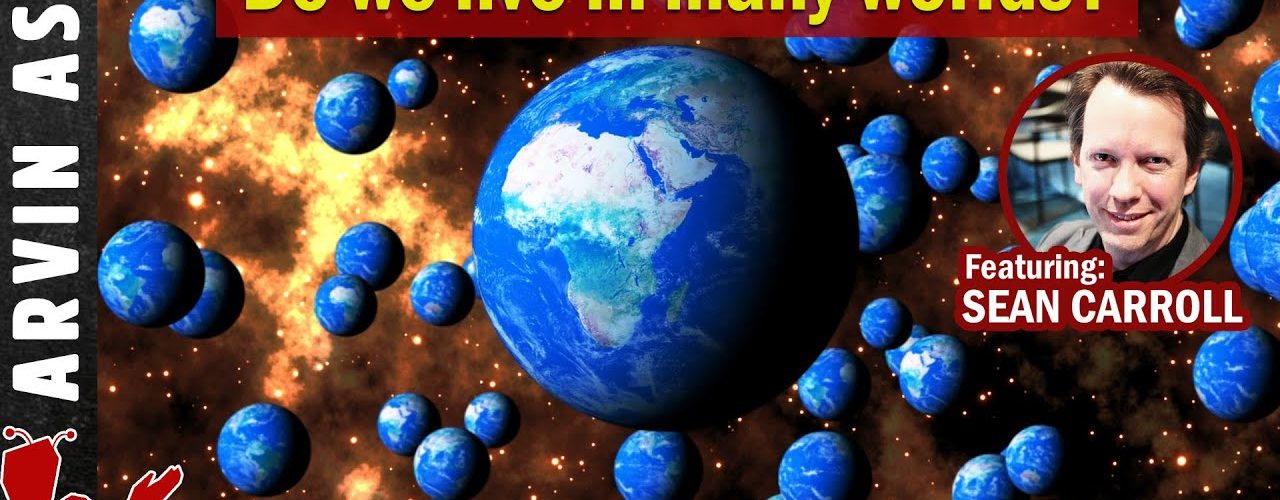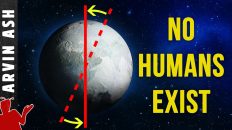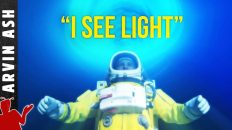What is it about quantum mechanics that makes it so different from almost all other sciences. Why is it so damn elusive and difficult to grapple with?
Quantum mechanics is the branch of physics that attempts to explain the behavior of very, very, very small things.
This behavior at the smallest scales appears bizarre, because we don’t see it in our every day experiences. Even down to the scale of things we can see with ordinary microscopes, classical physics predicts behavior very accurately.
The classical physics of Newton and Einstein is precise, predictable and deterministic. We are comforted by this. We know precisely where a basketball is going to go when we throw up a shot.
Quantum mechanics on the other hand appears to be based on probabilities of finding an object here or there. We don’t know and can’t know where an electron is in an atom, until we look at it, until we measure it, at least according to one interpretation.
Yes, Quantum mechanics is so bizarre, that there are different interpretations of what might actually be happening. In fact, there is no majority consensus on any one interpretation.
There is a particular interpretation however, put forth by graduate student Hugh Everett that was considered preposterous in 1957, when he first proposed it. But it has now become mainstream and is gaining huge support.
But it requires us to change our paradigm about our experience of reality, and consider that there may be many many universes or worlds where every possible quantum outcome happens. And that we are living in just one of those branches of the universe at any one moment.
One of the biggest proponents of this so-called “many worlds interpretation” is Professor Sean Carroll of Caltech.
I spoke with him via skype recently, where he answered some of the biggest question that I had as a skeptic
Before we look at the pros and cons of the many worlds interpretation, let’s take a look the most popular, and what is considered by many to be the standard interpretation of quantum mechanics. It is called the Copenhagen interpretation championed by Neils Bohn in the 1920’s.
In simple terms, the interpretation suggests that objective reality doesn’t exist until it is observed or measured.
The quantum world a governed by a set of probabilities is described by a wave function that evolves over time in the Schrodinger equation. The act of measuring forces the set of probabilities to randomly assume only one possible value.
So according to this, by observing the quantum world, we force it to choose one of several possible paths. Prior to this observation or measurement, the microscopic world exists in a state of all possible paths at once.
An electron is not spin up OR spin down. It is in a state of spin up AND spin down at the same time. When we measure it, it takes one of these states.
The many worlds interpretation on the other hand, postulated by Hugh Everett, says that the entire universe is in a state of superposition. A measurement may look like a particle has some set of properties, but that is not the overall reality. It posits that the world splits every time we THINK a quantum measurement is made. And that although we may see one thing in our world, there is another world in which another thing has occurred.
So for example, if we are trying to measure the spin state of a electron, the Many worlds interpretation says that our measuring device becomes entangled with the electron. This causes something called decoherence. The decoherence splits the universe in two such that in one universe the device measures spin up, and in the second universe, the device measures spin down. Both universes exist. We just happen to experience one of these universes. We could just as well be in either universe.
And similarly, this kind of decoherence is happening all the time. And in every instance this happens, the universe splits. So this is why it is called many worlds, because many such branches or splits of the world exist simultaneously.
So, this raises a lot of questions. But let’s look at why this is getting popular with physicists when compared to the standard Copenhagen interpretation.
In the Copenhagen interpretation, there are two sets of rules. One set of rules applies to systems prior to measurement, according a wave equation which is essentially a set of probabilities for the state of a quantum system at any one time. And a different set of rules applies to systems after measurement has occurred.
The many worlds interpretations says, no, this is not the way the universe works, that there are only one set of rules for everything. And that rule is that all systems abide and evolve over time according to the Schrodinger equation. And there are no probabilities because all possible outcomes are a branch of the many worlds.
You might not believe that branching of the universe can occur. But I will show you by splitting the universe into two branches right now. There is an app called universe splitter that I recently bought. When I put in two potential choices and ask the app to pick one, it sends a photon to a partially silvered mirror in a lab in Switzerland. The photon has a 50% chance of taking one of two paths, and reports which path it took. I am going to ask the app to help me decide between eating this lollipop or this apple. So Let me see what it tells me.
So in the universe where I made this video I am eating an apple, and that’s the video you are watching. But in another universe, I am eating a lollipop in my video. That universe is just as real as this one. You may or may not be watching me in that universe, but I am eating a lollipop there. I kind of prefer this universe because I like apples.
So in Many worlds the universe is not random and probabilistic like it is in the Copenhagen interpretation. It is deterministic according to the Schrodinger equation. The randomness is just our perception because we only experience one of the branches.
Both interpretations are weird but there are some Good points about the many worlds idea:
1) it gets rid of measurement problem. We use the same equation whether we measure something or we don’t measure something. There is no special role for the observer.
2) It lets us apply quantum mechanics to the entire universe. This is elegant.
3) And 3) There is no chance or probability. There is 100% chance that the world will be in a superposition of me eating the lollipop or eating the apple. From an overall perspective, there is no uncertainty. Both outcomes have occurred.
But this also raises some serious issues though:
1) What is the mechanism of the branching, how does that occur?
2) It asserts the existence of innumerable, possibly infinite other branches of the universe that we can’t see. Where do these branches reside. Doesn’t this violate energy conservation.
3) Another puzzle is why do we see only one world, if the other worlds are equally present, why can’t we experience them. Where the heck are these worlds located?
——-
(part 3)
I posed these questions to the foremost expert on the many worlds interpretation Sean Carroll – Theoretical physicist at Caltech. His latest book is called Something Deeply Hidden – quantum worlds and the emergence of spacetime. The link to his book is in the description below.
So first I asked about the what why the idea of branching is better than the idea of wave collapse. Take a listen.
So according to Sean Carroll, in Many worlds, the Schrodinger equation always applies. It’s the entanglement of two systems that causes a decoherence leading to the branching. So the question is what is heck decoherence.
It is not quite like wave collapse. It can be thought of as a loss of information to the environment. When an isolated quantum system like say an electron gets entangled with its environment like photons and other molecules that may be present, this has the effect of a transfer of quantum information. All of the photons and atoms that bounce off the electron are agents of decoherence, and can fix its position in space and give it a sharp outline.
This is decoherence and causes the branching. This is how quantum systems can start behaving like classical system.
For the second question, here’s what Sean Carroll had to say about the important questions of energy conservation.
So essentially what Sean Carroll is saying is that the total energy of the universe and all its branches is conserved analogous to the way that the all the individual probabilities inherent in the Schrodinger equation add up to one.
And finally, something that bugs me a lot, is if there are many worlds, why do we experience only one world. Here’s what Sean Carroll had to say about that.
So I think Sean Carroll did a great job of demystifying the common questions around the many worlds interpretation. And he also answered several other questions. If you want to see the interview in its entirety, you can see it on my Patreon or Youtube membership channel.
I came in as a skeptic. And I remain a skeptic, although less so now than before. I think the math is there to support everything that Sean Carroll says. I don’t think there’s any disputing that.
But should the universe be interpreted based strictly on mathematics, regardless of its intuitive aesthetics. Perhaps it should. Or is there a deeper truth that would be more satisfying.
No test can tell us the difference between the outcome of the two interpretations – Copenhagen vs. Many worlds, because they both give you the same outcome, and both invoke the Schrodinger equation.
Both interpretations seem bizarre. It’s a matter of choosing the one that seems less bizarre to you. A non-deterministic universe with probabilistic realities, or a deterministic universe but with near infinite realities that you can’t see, except the one you’re in.
The wise advice according to some scientists is, “look it doesn’t matter what you think or subscribe to because the equations give you the correct answer, so stop thinking and just shut up and calculate.”
I asked Sean Carroll about that, and he, like me, hates that idea. I myself think that physics is more than calculations, it is a science that tries to get at the truth about what the true nature of reality actually is. That’s what we should really be after, I feel. And that pursuit at least on this channel will always exist.







